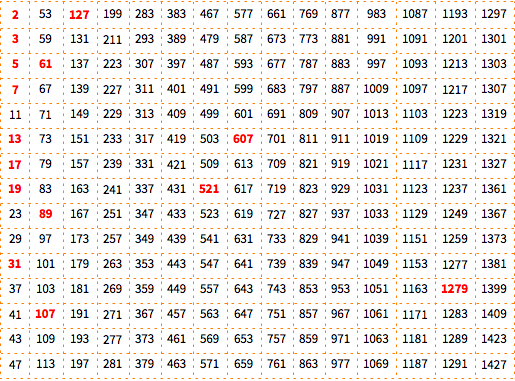


Prime numbers are not divisible by any other number than themselves. So, why does it happen so? You are going to learn in this article. If yes, then why are some numbers not divisible at all? They may be divided by other numbers you will get answers in decimals or fractions when they do. They are 2 and 3.Have you wondered why some numbers are divisible by numbers smaller than themselves and some are not divisible at all? If not, then it’s time to think about it now. Yes, there are only two consecutive prime numbers from 1 to 500. Are there any Consecutive Prime Numbers from 1 to 500? The largest prime number from 1 to 500 is 499, as it has only two factors, 1 and 499. They are divisible only by 1 and themselves. Prime numbers are the numbers that have only 2 factors. What is the Largest Prime Number from 1 to 500? For example, if we take 401, we can see that it has just 2 factors, 1 and 401, therefore it is a prime number. Prime numbers from 1 to 500 can be found by finding factors for a given number and check if it has factors other than 1 and itself. Interestingly, 2 is the only even prime number.

This is because 2 has only 1 and itself as its factors. There is only one even prime number between 1 to 500. How Many Even Prime Numbers are there from 1 to 500? There are 95 prime numbers from 1 to 500. So it is not prime.įAQs on Prime Numbers 1 to 500 What are the Prime Numbers from 1 to 500? If they are divisible by any of these prime numbers, then we can say that there is another factor apart from 0 and the number. To check if a large number is prime or not, we can use the divisibility rules of the first five prime numbers (2,3,5,7,11) and check to see if they are divisible or not.This is because the multiples can have more than two factors. Multiples of a number except 1 are not prime numbers.If a number has more than two factors (1 and itself), then it is not a prime number.Any other number that has 0, 2, 4, 6, or 8 as the last digit is not a prime number since they are completely divisible by 2. From prime numbers 1 to 500, 2 is the only even prime number.Important Notes on Prime Numbers 1 to 500 These prime numbers can be segregated in the range of numbers as shown in the following table. All the numbers that are listed in the table have exactly 2 factors. There are 95 prime numbers between 1 and 500 as shown below. The prime numbers from 1 to 500 are listed in the following chart. Step 3: If step 2 is not successful, the number will not be considered as a prime number. Step 2: If there are only two factors, add them to the list of prime numbers from 1 to 500. Step 1: List down the factors of all the numbers from 2 to 500 (Exclude 1 as it is not a prime or a composite number) The steps to use the factorization method to find the prime numbers from 1 to 500 are listed below. Therefore, it can be expressed as 1 × 19 or 19 × 1. From this, it is evident that 15 is not a prime number, whereas the number 19 has only two factors, which are 1 and 19. In other words, 15 can be expressed by the following multiplication facts: 1 × 15, 3 × 5. For example, the number 15 has 1,3,5 and 15 as its factors. If there are no other factors other than 1 and the number itself, then it can be termed as a prime number, otherwise, it is a composite number. In the factorization method, we check to see if a number has more than 2 factors, other than 1, and the same number. The following method shows how to check if a number is prime or not. Prime numbers from 1 to 500, have exactly 2 factors. The numbers that have more than two factors are called composite numbers. A prime number is always divisible by 1 and the number itself. In order to find the prime numbers between 1 and 500, we need to know the factors of all the numbers within this range.


 0 kommentar(er)
0 kommentar(er)
